Best telescopes for beginners: Picks for kids and adults
We’ve rounded up the best telescopes for beginners, kids and adults who want to get into stargazing.
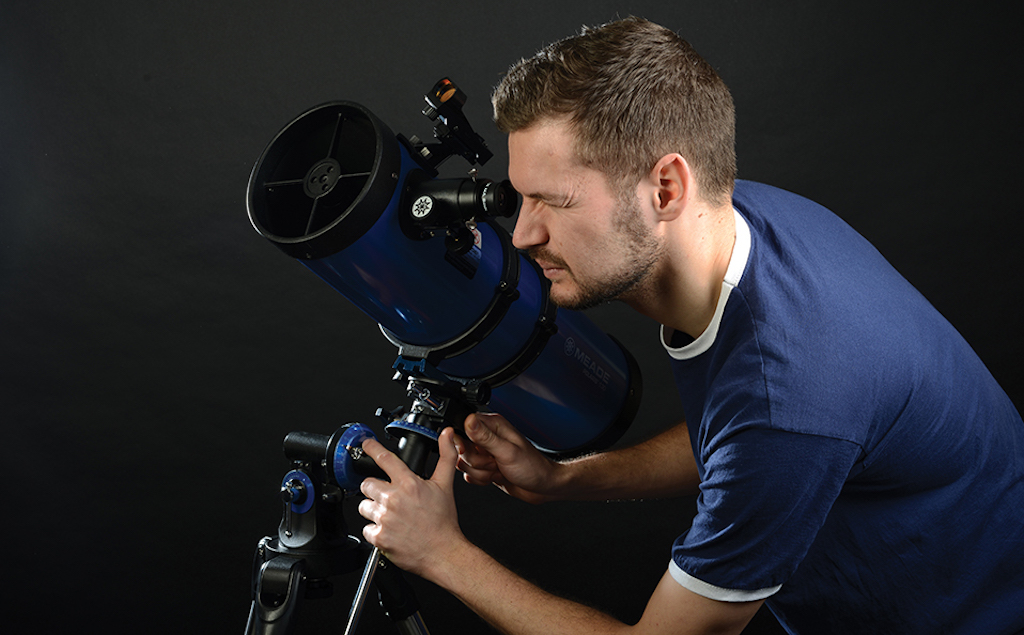
Looking for the best telescopes for beginners? You’re in the right place, as we’ve got a comprehensive round-up of the best models for anyone who wants to get into astronomy. These models have been carefully selected from top brands like Celestron, Meade and Sky-Watcher, so you can rest assured that they all provide some top quality optics.
There are various types of telescopes available: reflector, refractor and catadioptric. These all have different benefits and drawbacks, but in brief refractors are great for looking at the moon and planets, while reflectors are better for low-magnification targets such as galaxies and nebulas. Catadioptric telescopes fix some visual aberrations in these older types of telescopes - but they are often a bit more expensive. If you scroll down, you’ll find more advice on how to pick the best telescope for you.
One of our main bits of advice when buying a scope is to get one with a biggish aperture, so you can gather plenty of light. This should mean that you’ll be able to pick up deep sky targets that are fainter and further away - and nearby targets will appear more brilliant in the night sky.
Looking for more buying advice on optics? Have a scroll through our round-up of the best cameras, or read through our guide to the best beginners cameras currently available.
1. Celestron Starsense Explorer DX 130AZ: Best telescope for beginners
Why you can trust Top Ten Reviews
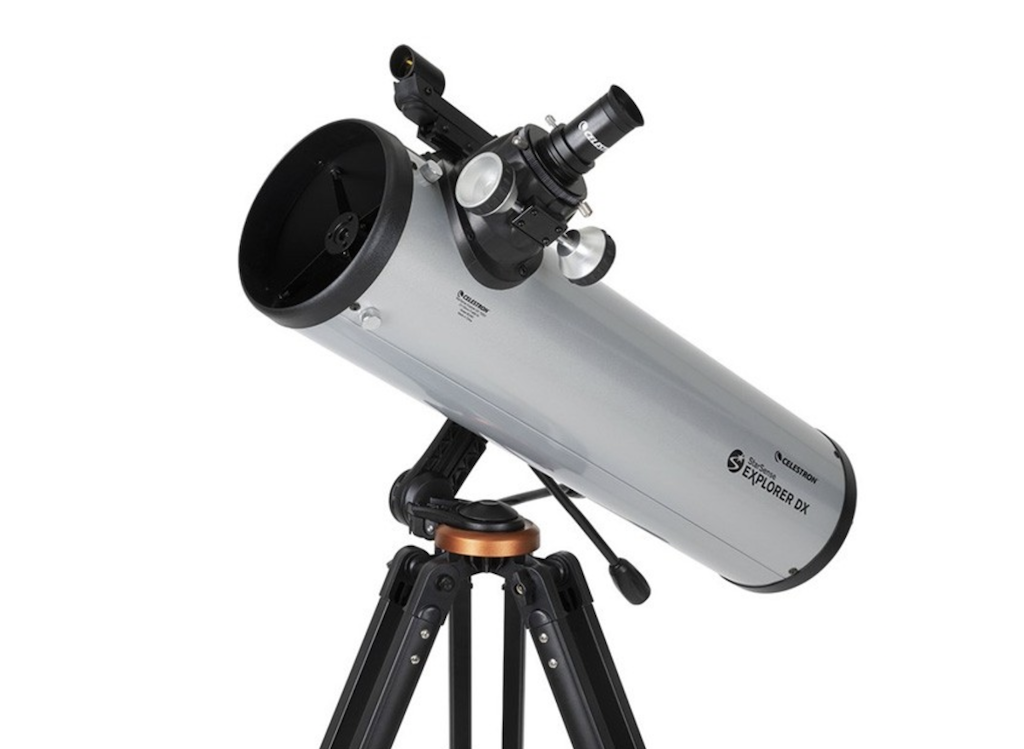
Celestron Starsense Explorer DX 130AZ
Our expert review:
Specifications
Reasons to buy
Reasons to avoid
The development of the smartphone has revolutionized how we interact with technology, and Celestron’s Starsense series of beginners’ telescopes take full advantage of that. The Celestron Starsense Explorer DX owes its ingenious design and ease of use to the Starsense app, combined with the magic of GPS.
Ordinarily, a GoTo telescope user would have to align their telescope on one or two bright stars for the onboard computer to figure out what direction it’s pointing in. This could be a bit daunting for newcomers to the hobby who just want to start observing amazing celestial wonders, without getting bogged down in the setting up. Celestron’s Starsense technology ingeniously does all of the calibration and aligning for you in a matter of minutes.
First download the Starsense app onto your smartphone, which you can then place into a bracket attached to the telescope’s mount. A mirror built into the dock sits below your smartphone’s camera, reflecting the starry sky into the camera’s lens. The app takes an image of that reflected starry sky, and based on the patterns of the stars that it "sees", can calculate what direction the telescope is facing, mapping out where astronomical objects of interest are in relation to its field of view.
Your smartphone screen will then display a simulated view of the night sky along with menus from which to select objects (such as the planets or galaxies) to observe. Once you choose your target, screen arrows are displayed, directing you to nudge the telescope in the direction of your chosen object. Once it's in your instrument's field of view, the Starsense app will issue an alert - all you have to do is look through the eyepiece!
Celestron’s Starsense Explorer range includes a 4.5-inch aperture Newtonian and a 4-inch refractor, but for better light-grasping views, the Celestron Starsense Explorer DX 130AZ, which boasts an aperture of 5.11 inches, is the model to go for.
The Celestron Starsense Explorer DX 130AZ does come with two eyepieces, a 25 mm and 10 mm, which will provide magnifications of 26x and 65x, but as with all mass-produced budget telescopes, we recommend purchasing additional bespoke accessories to make the most of this instrument's optical system.
The supplied mount also isn’t particularly heavy duty, and the lack of a motor drive means you have to make the effort to push the telescope around the sky rather than let it drive itself, but as a beginner's telescope with integrated smartphone technology, you’ll be hard-pressed to find an instrument as good and easy to use for the price.
2. Meade Instruments StarPro 102: Best for fuss-free assembly and maintenance
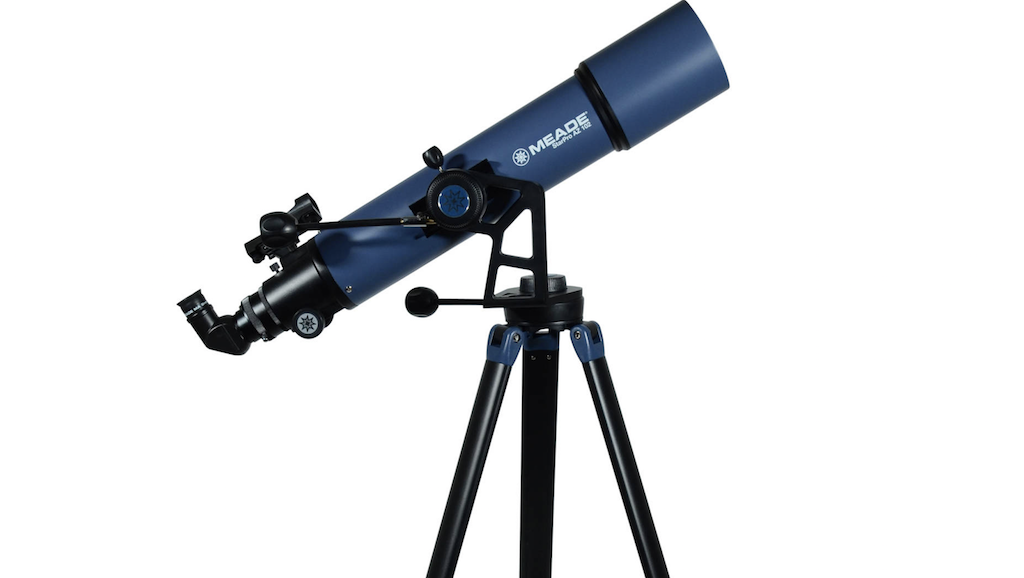
Meade Instruments StarPro 102
Our expert review:
Specifications
Reasons to buy
Reasons to avoid
With its long tube, Meade Instruments' StarPro 102 has the look of a classic refractor - simple to use and assemble, it's a no-frills telescope for those who are happy to learn their way around the night sky without the aid of technology.
The telescope is attached to a single arm alt-azimuth mount and features slow-motion control cables that enable fine movements - from left to right as well as up and down - during navigation. There’s no more need for sweeping past an object, and jerky movements are banished when centring a chosen target in the eyepiece. Control is as smooth as velvet.
The StarPro 102 is fully supplied with a tripod, three eyepieces with focal lengths of 26mm (25x), 9mm (73x) and 6.3mm (105x) plus a Barlow lens that can double the magnification of a given eyepiece.
A star diagonal is also included, which directs the light upwards to the eyepiece for comfortable viewing, although be careful – this accessory's weight can tip the telescope along the altitude axis, requiring the user to adjust the slow-motion control. A smartphone adapter is also supplied for basic astrophotography.
Also supplied is the AutoStar Suite Astronomer Edition software on a DVD, so it's a little old-fashioned compared to downloadable smartphone apps, but this will suit users uncomfortable with using advanced technology, making for a nice, simple observing experience.
The StarPro is also available in apertures of 2.76 inches (70mm), 3.15 inches (80mm) and 3.14 inches (90 mm), but for a telescope that's able to observe a wider variety of targets, the StarPro 102 is highly recommended.
3. Sky-Watcher Flextube 200P: Best for deep views of the universe
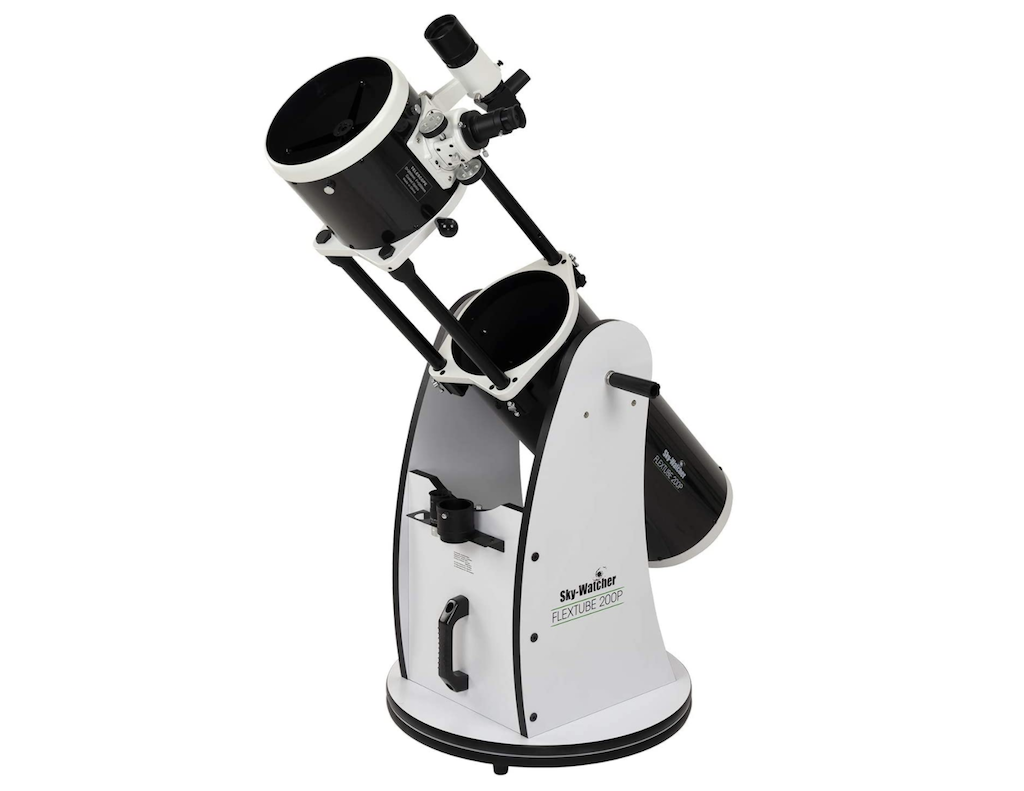
Sky-Watcher Flextube 200P
Our expert review:
Specifications
Reasons to buy
Reasons to avoid
Dobsonian telescopes are considered by astronomers to be observing powerhouses - huge tubes on simple alt-azimuth rocker mounts that don't require the need for a tripod - but they can often be bulky and cumbersome for travel. Sky-Watcher’s line of Flextube Dobsonians solves problems of portability by manufacturing the tube so that it splits in two, allowing it to extend along a truss or collapse into a more compact form.
Because of their design, Dobsonian mounts can comfortably hold larger apertures, usually at far less of a cost than the equivalent tripod-mounted reflecting or refracting telescopes. The Flextube 200P, with its 7.87-inch (200mm) diameter aperture, is a great bargain for the price - especially given the superb views it offers thanks to its light-gulping ability: if you've ever wanted to see some of the furthest galaxies and nebulas up close, then this is the telescope for you.
There is a problem with the Flextube 200P though, and it’s that the telescope needs frequent collimation - the process of aligning the primary and secondary mirrors, using tiny screws that hold them in place. Even a few small jolts can knock the mirrors out of alignment, so be prepared to tinker with this instrument.
The aperture size presents another issue: although the truss-tube design makes the set up more compact and portable, the tube and mount still weigh over 50 lbs (22.7 kg) together. It’s not quite a grab ’n’ go telescope, so we advise being mindful of this before traveling to dark-sky sites.
The Flextube 200P comes with a 10mm (120x) eyepiece, suitable for presenting wide fields of view that can encompass entire galaxies or the full moon, and a 25mm (48x) one for more detailed work on, say, a close up of the rugged lunar surface or the planets.
Sky-Watcher's Flextube series also includes the larger 9.84-inch (250mm), 11.81-inch (300mm), 13.78-inch (350mm) and 15.75-inch (400mm) models, but for a beginner wanting a little bang for their buck, the 200P is a great place to start.
4. Orion StarBlast 102: Best for portability
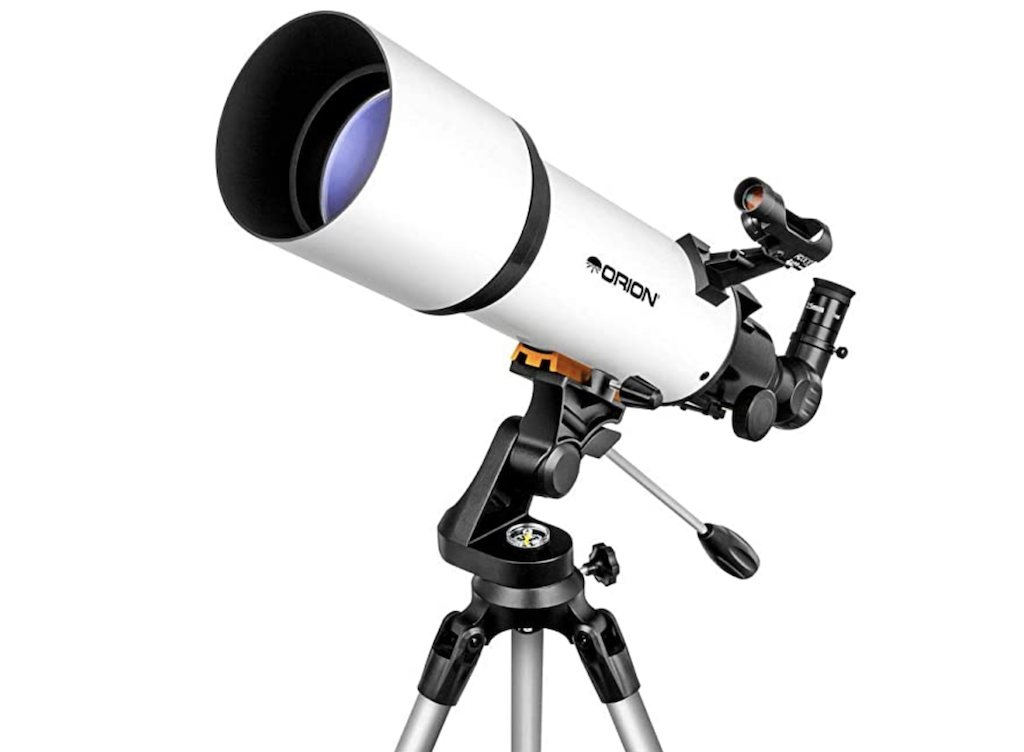
Orion StarBlast 102
Our expert review:
Specifications
Reasons to buy
Reasons to avoid
Aside from affordability, the prerequisites of telescopes for beginners also include portability and simplicity, and the StarBlast 102 from Orion Binoculars and Telescopes has all three in abundance.
The affordability is naturally reflected in the price, but also in value for money. Here we are getting an achromatic refractor with a decent four-inch aperture for less than $400, with eyepieces, red-dot finder (for helping to home in on your celestial target) and a basic pan-head alt-azimuth mount and steel tripod combo.
As mentioned, some refracting telescopes suffer from a malaise known as chromatic aberration or color fringing, which can lead to you looking at bright objects like the moon and seeing fringes of color around it in your field of view. Being an achromat, the StarBlast 102 makes use of a concave lens, placed next to the primary convex lens, in order to correct the aberration - the aim is that the two reverse lenses cancel each other out, in theory removing the color fringing around objects seen through the eyepiece.
This works up to a point with the StarBlast 102, but it wouldn’t be advisable to use too high a magnification - say, anything greater than 80x or 100x - with this telescope as the achromat solution isn’t perfect.
To that end, the telescope comes with two quality Plössl eyepieces, one with a 25 mm focal length that provides a magnification of 24x and a 10mm eyepiece that enables 60x. Observers will get great views of the moon, the darker cloud bands of Jupiter, Saturn's rings, and the brighter deep-sky objects such as the Andromeda Galaxy in the constellation of Andromeda and the Ring Nebula in Lyra.
The StarBlast 102's portability comes from its weight of 10.6 lbs (4.8 kg) as well as the carry bag that’s included in the package, which can fit the scope, mount, tripod and eyepieces snugly inside.
Finally, its simplicity is found in its ease of use. For example, it’s equipped with a ‘right-side-up’ star diagonal, meaning images are not upside down when viewed as is the case with most other refractors. This is definitely an advantage, especially when trying to use the simple two-way pan-head mount to slew the telescope to your desired target.
5. Unistellar eVscope: Best for group observation
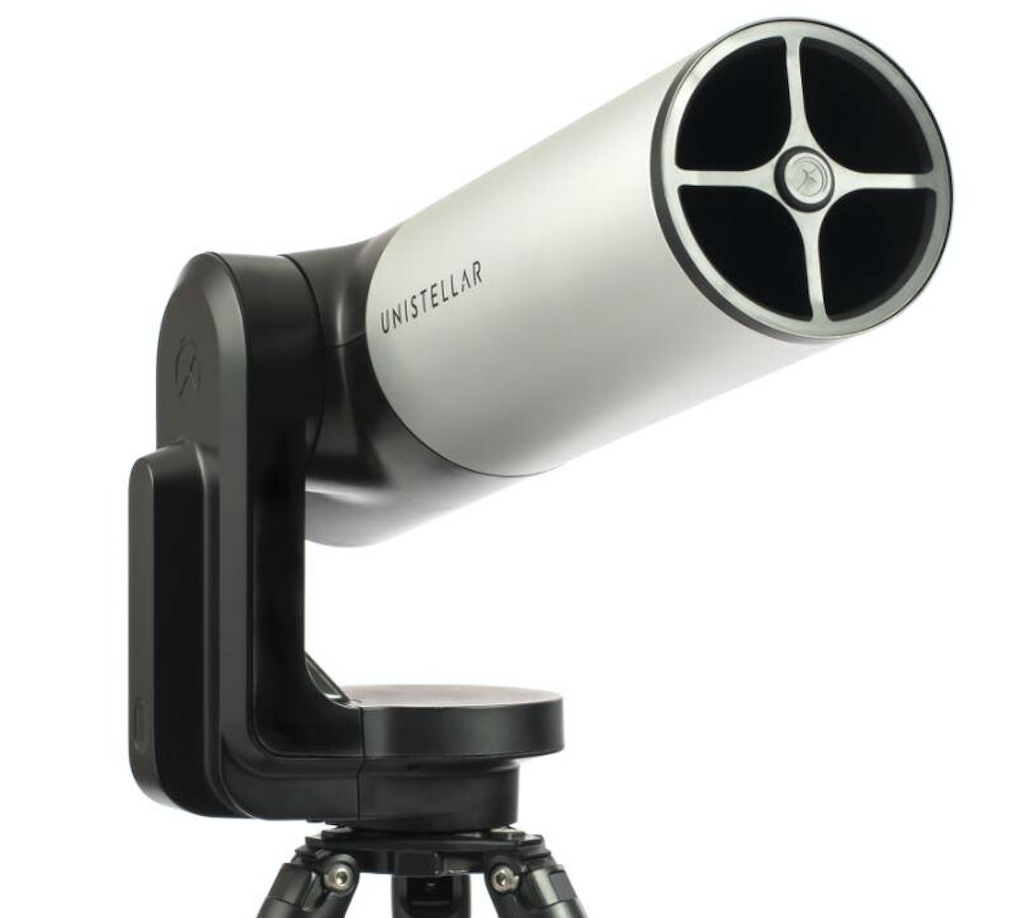
Unistellar eVscope
Our expert review:
Specifications
Reasons to buy
Reasons to avoid
Unistellar’s eVscope is the next generation in telescopes, integrating an electronic sensor at the telescope’s focus, producing an image that builds up in detail, color and contrast over time as the sensor acquires more photons.
Your chosen target is viewed through a faux eyepiece, which is, in fact, an LED screen. All in all, the views that the Unistellar eVscope produces are much more advanced compared to what you would expect to see through the eyepiece of an equivalent telescope.
Even better, you can save your observations, just like an astrophotographer stores their images. It isn’t a direct replacement for astrophotography though: imagers take many raw frames and process them to high fidelity, but for beginners wanting to avoid the learning curve presented by other telescopes, this is a fantastic new product. Be warned though, it is pricey, retailing at just over $3000. Price tag aside, the technology behind the eVscope is attractive to both beginners and more experienced astronomers.
The telescope is also assisted by the Unistellar App, which you can download onto your smartphone and use to control the telescope by connecting to the eVscope’s built-in WiFi. The app contains details of 5200 celestial objects, including planets, comets, stars, nebulae and galaxies. It's also updatable, so if a new comet comes along, you won’t miss out.
The eVscope is straightforward to set up, attractive to those interested in experiencing the latest in telescope technology, provides better views than any telescope of equivalent aperture size and is great for showing children the sights of the night sky. You can even connect ten smartphones up to the telescope, allowing for simultaneous group observations.
What's the difference between refractors and reflectors?
You'll find that the larger the reflector, the less expensive it is compared to a refractor of equivalent size. However, there is a downside to using a telescope with mirrors - reflectors do need a lot of upkeep, especially when making sure that their mirrors are aligned (or collimated): if they are not, then views of the night sky are somewhat distorted since the light will not be able to focus into one point at the eyepiece effectively.
Generally speaking, refractors are great for views of the solar system and bright deep-sky objects, while reflectors are light guzzlers, so are better placed for capturing faint galaxies and faint nebulas.
While, in comparison, refractors are primarily chosen for their low maintenance, whilst still achieving good views, the larger, high-quality models can cost many hundreds or even thousands of dollars. Some cheaper refractors are also known to suffer from an optical effect called chromatic aberration, which results in stray colors appearing in the image, particularly when observing bright targets such as the moon and bright planets such as Jupiter and Venus. The higher-end refractors have been manufactured to eradicate the problem.
What is the ideal aperture for telescopes?
For decent views, it's recommended that you go no smaller than an aperture of at least four inches if your heart is set on a reflector. If a refractor is more your kind of telescope, then you can afford to go down to three-inches without compromising on optical prowess - especially in high-quality models. Though again it's always best to shop around for larger apertures, depending on your budget.
The larger the aperture, the more light your telescope captures, and the fainter the object you can see. All four-inch telescopes will show the cloud bands and moons of Jupiter, the rings of Saturn, close-ups of the craters on the moon, and the brighter nebulas, star clusters and galaxies. The greater the aperture, the more detail you can see in these objects.
What else will beginners need?
Telescopes are usually supplied with two or three eyepieces, offering the astronomer a variety of different magnifications that's dependent on the focal length of the telescope tube and the eyepiece in question. Measurements of the latter are given in millimeters on the side of any given eyepiece. Examples are 25mm or 10mm.
Eyepiece fittings are also an essential part of telescope kit and describe the size of the slot in which the eyepiece fits into in inches. In beginner telescopes, you'll discover that a 1.25-inch fitting is the most common, while two inches is reserved for slightly more advanced instruments.
As well as eyepieces, most beginners telescopes will come with everything you need to get started in astronomy: a tripod, accessory bag, software if relevant, instruction manuals, finderscope, dew shields and a mount, which allows you to either manually or electronically slew to objects in the night sky.
If you’re willing to expand your budget and pay a little more, you can buy a telescope with a motor drive and computerized GoTo system. These revolutionary instruments make the most of a hand controller (or, as is becoming increasingly common, an app on your phone) that affords you the opportunity to instruct the telescope to slew to a chosen target at the touch of a button.
As with all telescopes - whether it's a beginner's instrument or not - it is often necessary to upgrade them with accessories in order to make the most out of the optical system. The good news is that items such as tripods, mounts and eyepieces can also be bought separately, and often at even greater quality than those that are supplied with beginners’ telescopes.
Sign up to receive the latest news, reviews, buying guides and deals direct to your inbox
Gemma is editor-in-chief of science and space magazines How It Works and All About Space as well as Science, Technology, Engineering, Arts and Mathematics (STEAM) kids education brand Future Genius. She is the author of several books including "Quantum Physics in Minutes", "Haynes Owners’ Workshop Manual to the Large Hadron Collider" and "Haynes Owners’ Workshop Manual to the Milky Way". She holds a degree in physical sciences, a Master’s in astrophysics and a PhD in computational astrophysics. She was elected as a fellow of the Royal Astronomical Society in 2011. Previously, she worked for Nature's journal, Scientific Reports, and created scientific industry reports for the Institute of Physics and the British Antarctic Survey. She has covered stories and features for publications such as Physics World, Astronomy Now and Astrobiology Magazine.

